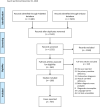Clinical characteristics of primary carnitine deficiency: A structured review using a case-by-case approach
- PMID: 34997761
- PMCID: PMC9305179
- DOI: 10.1002/jimd.12475
Clinical characteristics of primary carnitine deficiency: A structured review using a case-by-case approach
Abstract
A broad spectrum of signs and symptoms has been attributed to primary carnitine deficiency (PCD) since its first description in 1973. Advances in diagnostic procedures have improved diagnostic accuracy and the introduction of PCD in newborn screening (NBS) programs has led to the identification of an increasing number of PCD patients, including mothers of screened newborns, who may show a different phenotype compared to clinically diagnosed patients. To elucidate the spectrum of signs and symptoms in PCD patients, we performed a structured literature review. Using a case-by-case approach, clinical characteristics, diagnostic data, and mode of patient identification were recorded. Signs and symptoms were categorized by organ involvement. In total, 166 articles were included, reporting data on 757 individual patients. In almost 20% (N = 136) of the cases, the diagnosis was based solely on low carnitine concentration which we considered an uncertain diagnosis of PCD. The remaining 621 cases had a diagnosis based on genetic and/or functional (ie, carnitine transporter activity) test results. In these 621 cases, cardiac symptoms (predominantly cardiomyopathy) were the most prevalent (23.8%). Neurological (7.1%), hepatic (8.4%), and metabolic (9.2%) symptoms occurred mainly in early childhood. Adult onset of symptoms occurred in 16 of 194 adult patients, of whom 6 (3.1%) patients suffered a severe event without any preceding symptom (five cardiac events and one coma). In conclusion, symptoms in PCD predominantly develop in early childhood. Most newborns and mothers of newborns detected through NBS remain asymptomatic. However, though rarely, severe complications do occur in both groups.
Keywords: carnitine; clinical characteristics; organic cation transporter novel 2; phenotyping; primary carnitine deficiency; screening.
© 2022 The Authors. Journal of Inherited Metabolic Disease published by John Wiley & Sons Ltd on behalf of SSIEM.
Conflict of interest statement
Mirjam Langeveld is involved in premarketing studies with Sanofi‐Genzyme, Protalix BioTherapeutics, and Idorsia. Financial arrangements are made through AMC Research BV. No fees, travel support, or grants were obtained from pharmaceutical industry. Loek L. Crefcoeur, Gepke Visser, Sacha Ferdinandusse, Frits A. Wijburg, and Barbara Sjouke declare that they have no potential conflicts of interest.
Figures
References
Publication types
MeSH terms
Substances
Supplementary concepts
LinkOut - more resources
Full Text Sources
Medical
Research Materials
Miscellaneous



